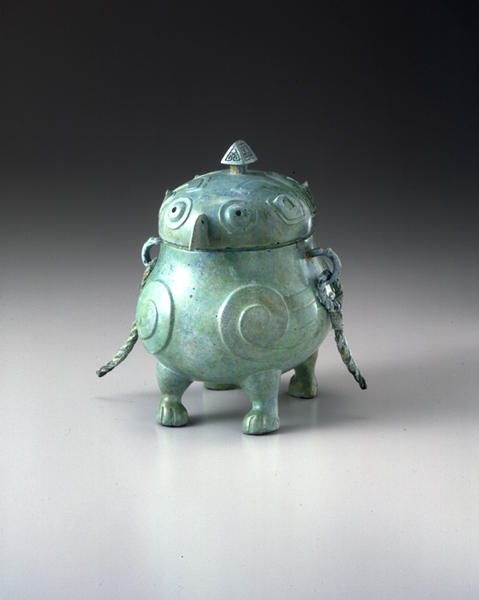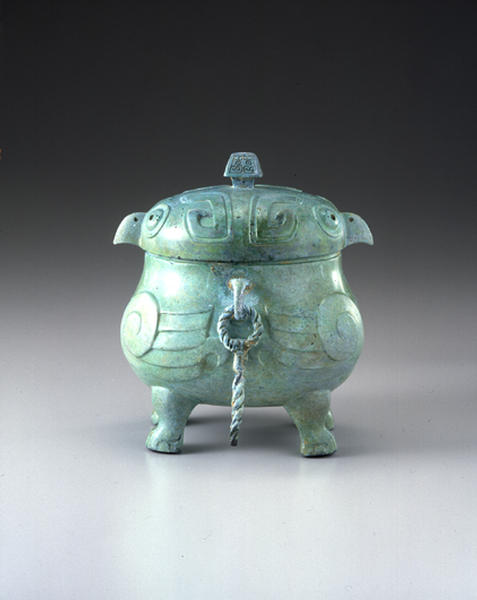You in the shape of Owls
- China
- China, Late Shang, late Anyang phase
- 12-11cB.C.
- Bronze
- H-17.9 D-13 W-15.6
Catalogue Entry
This lidded elliptical vessel with a bail handle is a kind of you with a shape like a pair of owls standing back to back, representing the so-called owl you. The roof-shaped pull placed in the center of the lid bears the inverted taotie design. On either end of the long axis, the beak of the owl protrudes, flanked by a pair of round eyes. Two pairs of wings are bas-reliefed on the sides of the vessel, which are supported by two pairs of feet with simple talon-pattern. The short handle resembling braided rope spanning the short axis has corroded and broken in the center. Somewhat plain semi-circular rings with a design of an animal's head attach the handle to the body of the vessel.
You came in two shapes in the Anyang period cylindrical and elliptical but their common, major design elements recall owls. The owl design itself can be found in other types of vessels in the Anyang period, where the owl skillfully fitted into the bulging shape of the vessel. A stylistic evolution of the following sort can be proposed: a beginning phase in which four-legged, handleless you were created with the design of two owls facing each other, followed by the next phase in which a handle was attached to the vessel spanning the short axis on a you, with a design of two back-to-back owls, and a final stage in which you are exemplified by one at the Miho Museum (cf. Catalogue of the South Wing, no. 78).*1 In this last phase, the Miho Museum piece attests to common elements of these you at the end of Anyang period a pair of beak-like projections on the lid, dominant use of taotie design, and the elliptical base.*2
The surfaces of the back-to-back owl you dated to the late Anyang period are left plain without the usual thundercloud design. The rather plain animal-head design on the rings for the bail handle should not be considered to be evidence that the present piece should be dated later than the late Anyang period. A similar example can be found in the you from Erlangpo Shilouxian, Shanxi province.*3

